In our fast-paced industrial world, where staying efficient and precise is key, plastic injection molding really shines as a fantastic manufacturing process that touches so many different sectors. This innovative method makes it possible to produce plastic components in bulk with amazing accuracy and dependability. It is the go-to choice for businesses looking to meet high-quality standards without slowing down production.
From automotive parts to the latest in consumer electronics, plastic injection molding plays a crucial role in creating the everyday items we use.
In today’s post, we’re excited to dive into the basics of plastic injection molding, taking a closer look at how it works and highlighting the diversity of plastic injection molding applications across various industries
What is Injection Molding?
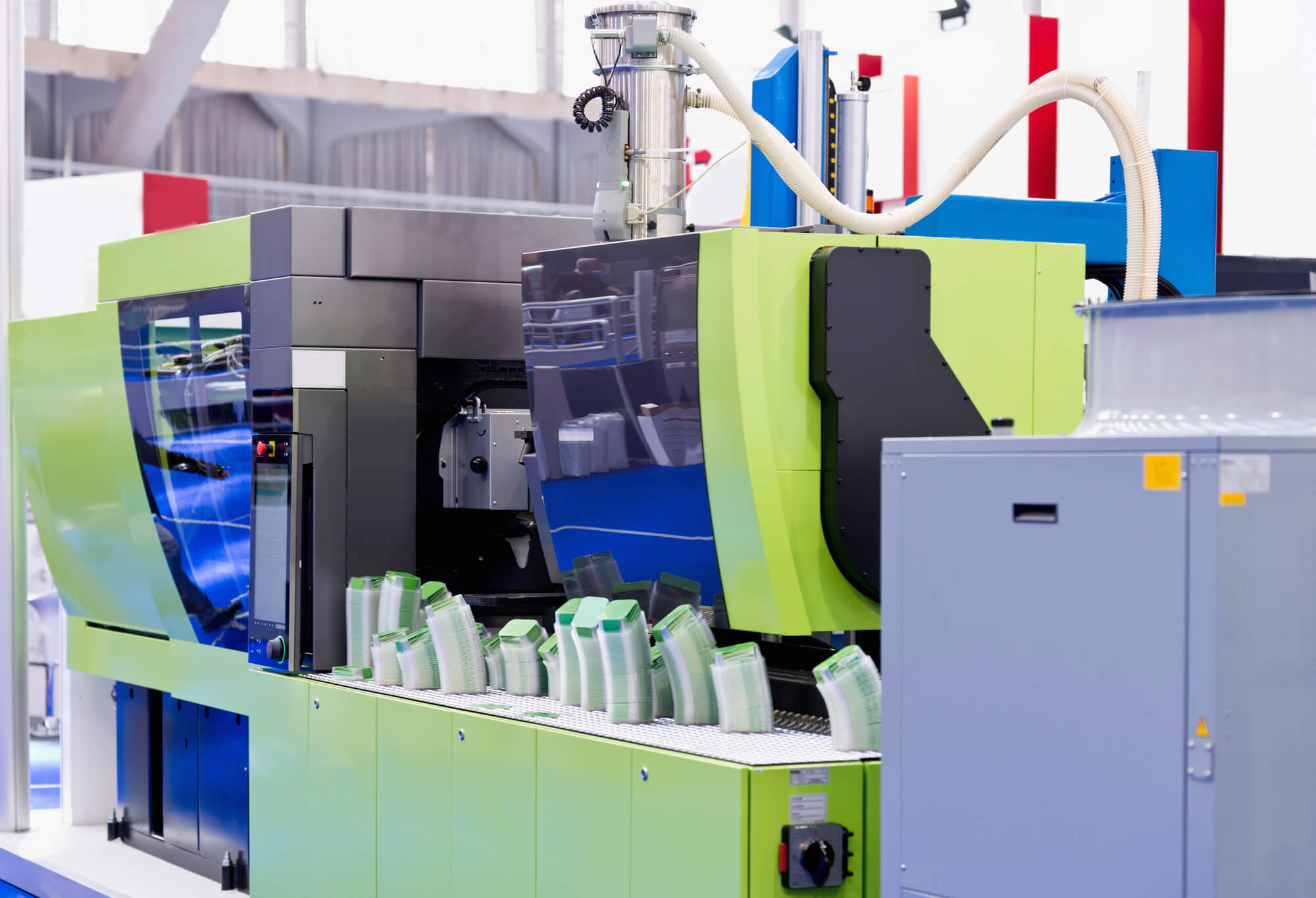
Injection molding (IM) is a manufacturing process used to produce complex parts or objects with high precision and repeatability. This technique involves injecting molten material into a mold, where it cools and solidifies into the final product shape. The process is highly favored in manufacturing sectors where control over product consistency and scale efficiency is essential.
The injection molding process begins with the design and engineering of a mold, which is typically made from steel or aluminum. This mold is vital as it replicates the negative design of the desired part. Precision in mold design is vital, as it directly influences the quality and the detail of the injected products.
Once the mold is prepared, it is loaded into an injection molding machine. In the case of plastic injection molding, one of several types of plastic material(polymers), usually in the form of pellets, is fed into the machine, where it is heated to a molten state. This molten plastic is then injected into the mold under high pressure, ensuring the material reaches all parts of the mold cavity.
After injection, the material cools rapidly; the mold opens to eject the solidified part. The cycle then repeats, making it suitable for high-volume production of products with stringent quality requirements.
Types of Injection Molding
Plastic injection molding encompasses various techniques to cater to specific manufacturing needs. Each type is designed to optimize the production process and achieve desired outcomes based on factors such as complexity, volume, and material.
Here, we explore two prominent methods: insert molding and rapid injection molding.
- Insert Molding
Insert molding is a specialized injection molding technique that integrates metal or other materials into the plastic component during the molding process. This technique is commonly used to enhance the mechanical strength, functionality, and durability of the final product. For example, in automotive applications, insert molding can embed metal inserts (such as threaded fasteners) into plastic components, ensuring a secure assembly without the need for additional hardware. The primary advantage of insert molding is its ability to create complex parts efficiently. By combining two processes—insert placement and plastic injection—a single step can replace multiple steps in conventional assembly, reducing labor costs and minimizing potential points of failure. This method is not only time-efficient but also improves precision, as the inserts are secured within the molded part seamlessly. - Rapid Injection Molding
Rapid injection molding, as the name suggests, focuses on shorter production cycles and faster prototyping. This method is particularly useful in industries that require quick turnaround times for testing and validation of new designs. Rapid injection molding uses lightweight, less expensive molds (often made from aluminum or low-temperature resins) that can be produced quickly, even in low volumes. The benefits of rapid injection molding are significant. It allows companies to test designs, gather user feedback, and make necessary adjustments before committing to full-scale production. Additionally, this method supports low to medium-volume manufacturing, making it ideal for startups and businesses looking to introduce new products without the financial burden associated with traditional injection molding processes.
Benefits of Injection Molding
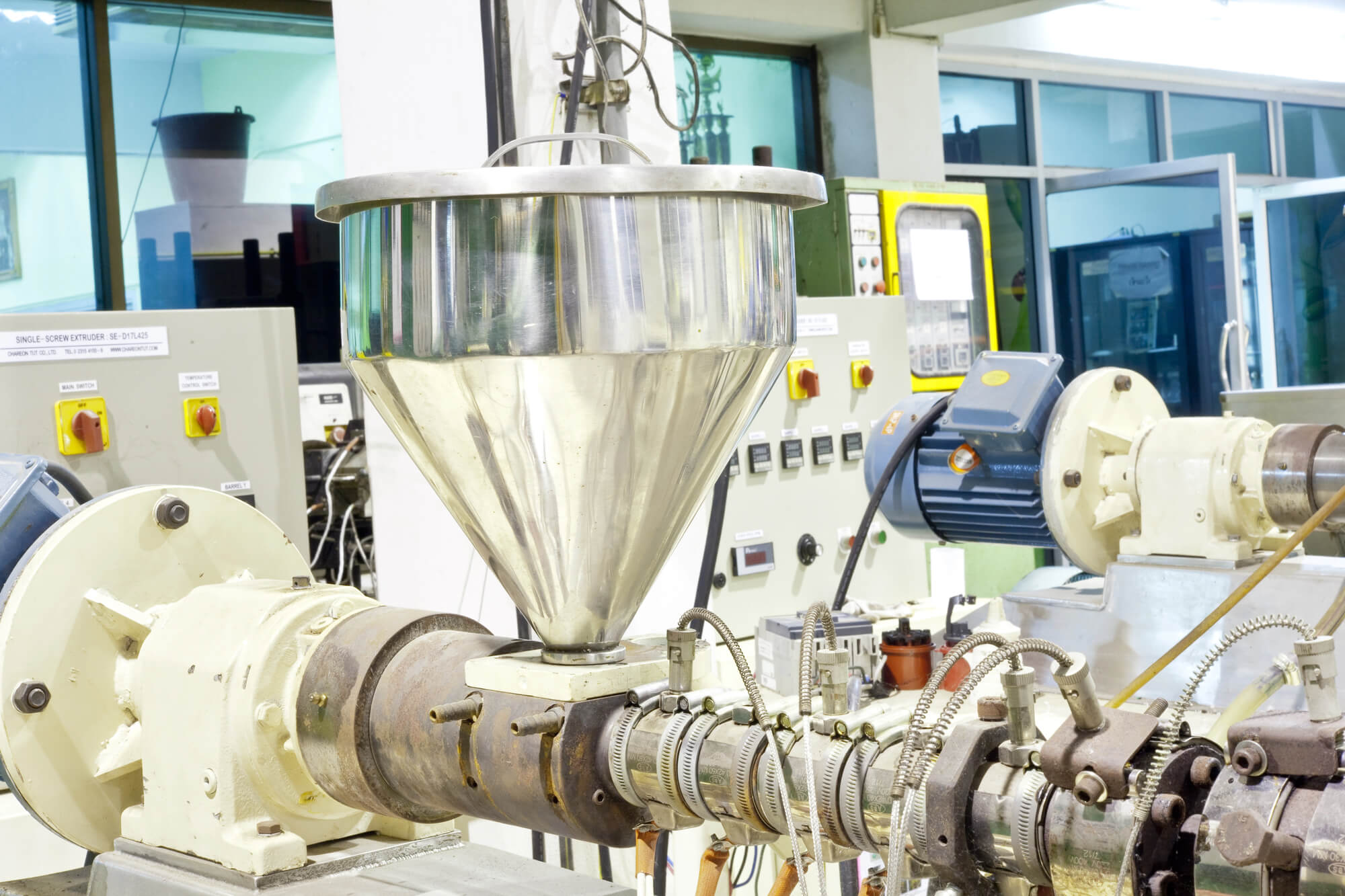
Injection molding is a highly efficient manufacturing process that revolutionizes the way plastic injection molded parts are produced. Utilizing advanced techniques allows for the rapid and cost-effective creation of complex designs, and that’s just one of its many benefits to all types of industries.
Efficiency in Production
Injection molding excels in mass production, rapidly creating complex plastic parts with minimal human input. The automation and short cycle times—from seconds to minutes—boost productivity while ensuring consistent quality. Though mold creation involves initial costs, the volume produced offsets it, reinforcing overall economic benefits. Its automation facilitates continuous operation with minimal oversight, meeting industry-specific requirements reliably.
This precise and repeatable process minimizes material waste, aligns with sustainable practices, and controls costs, which is essential for industries requiring high precision, such as the automotive and medical sectors.
Design Flexibility
This manufacturing method offers outstanding design flexibility, allowing intricate shapes and details that enhance both aesthetics and functionality. It enables quick prototyping and adjustments, optimizing component quality. Injection molding consistently produces high-quality parts with tight tolerances, which is crucial for performance and durability in competitive fields.
Cost-Effectiveness
The streamlined injection molding process minimizes waste and employs reusable thermoplastics, driving down costs significantly. Producing complex injection molded plastic parts in a single step saves time and reduces expenses. The lightweight nature of the materials further lowers shipping and handling costs, while the automated process ensures consistent quality, enhancing profitability and market positioning.
Precision and Tolerances
Injection molding is recognized for its precision and ability to maintain tight tolerances. Each part adheres to exact specifications, a key for seamless assembly. The high-pressure filling process reduces defects, enhancing production efficiency. This reliability is vital for high-performance sectors, including aerospace and medical devices, where quality and regulatory compliance are paramount.
The Types of Materials Used in Plastic Injection Molding
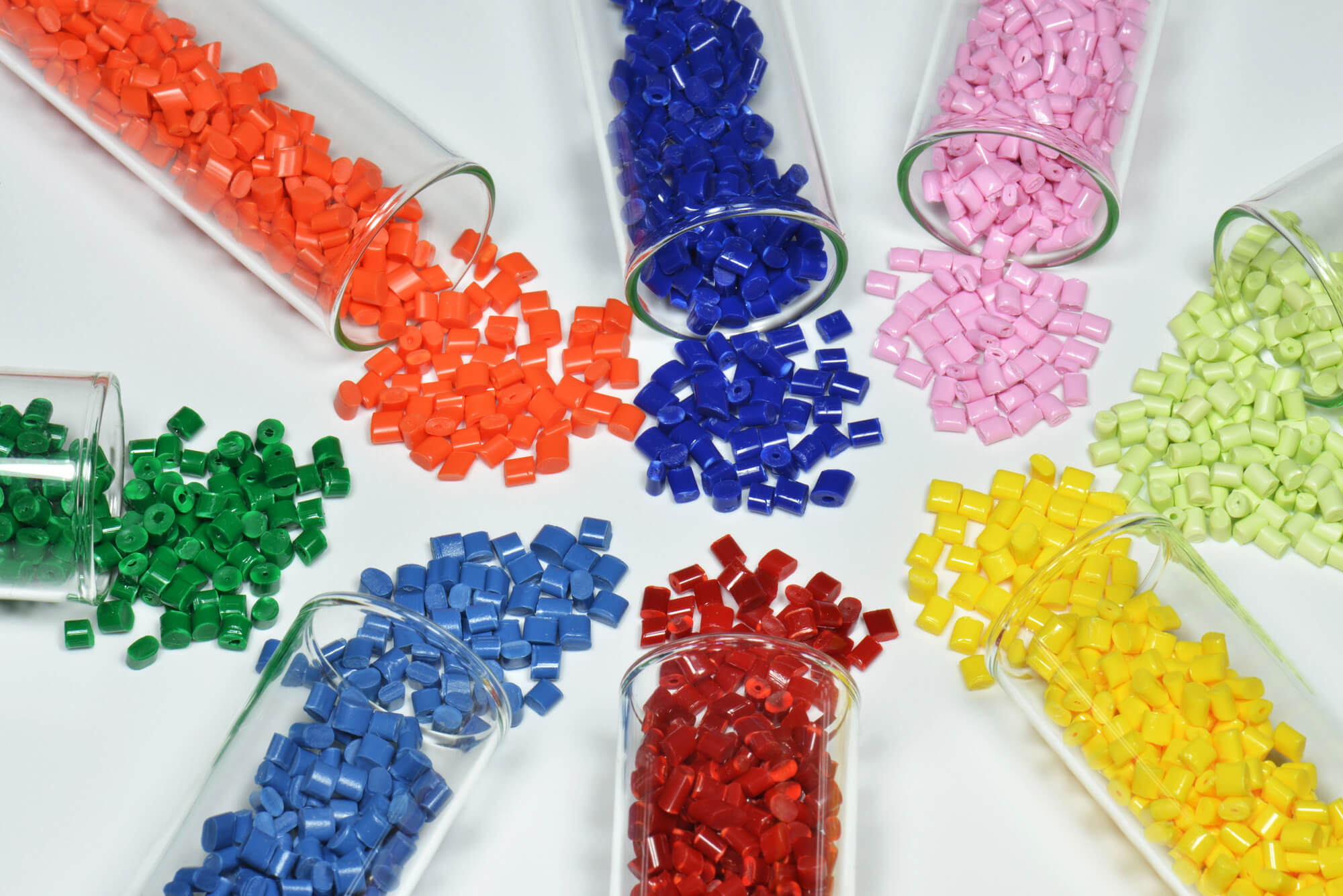
In plastic injection molding, the choice of material substantially influences the properties and suitability of the final product.
Thermoplastics
Thermoplastics are frequently utilized in plastic injection molding due to their versatility and adaptability in various applications. These materials, known for their ability to melt and solidify repeatedly without significant degradation, are chosen based on the specific requirements of the product being developed.
The selection of the appropriate thermoplastic resin is a critical decision in the molding process, influencing the durability, aesthetics, and function of the final product.
Thermoplastics range from commodity materials like polyethylene and polypropylene to engineering resins such as nylon and polycarbonate. Each type of thermoplastic offers distinct properties that suit different applications. For instance, polyethylene is highly valued for its impact resistance and flexibility, making it ideal for containers and packaging.
In contrast, polycarbonate is preferred for its optical clarity and heat resistance, fitting applications such as eyewear and automotive components.
The choice of material impacts not only the performance characteristics but also the molding parameters, including temperature settings and injection pressures. Understanding these material-specific requirements is essential for optimizing the manufacturing process and ensuring the quality and precision of the injection molded products.
Thermosetting Plastics
Unlike their thermoplastic counterparts, thermosetting plastics undergo a chemical change when heated during the injection molding process, creating a permanent set that cannot be melted down again. This transformation, often referred to as curing, is essential for products that require enhanced resistance to heat and chemicals. Consequently, thermosetting plastics are integral in applications demanding durability and thermal stability.
The equipment used to mold thermosetting plastics differs somewhat from that used for thermoplastics due to the distinct processing requirements. The injection molding machines must be capable of handling the high curing temperatures and pressures necessary to achieve the desired chemical cross-linking within the material. This process guarantees that the final product will maintain its integrity under extreme conditions, resisting deformation and thermal degradation.
Further, the inherent resistance of thermosetting plastics to electricity, heat, and solvents makes them ideal for manufacturing electrical insulators, automotive parts, and various industrial components.
The permanent setting of these materials means that once they are molded, their structural properties are maintained indefinitely, providing long-term reliability and performance in demanding environments. This reliability is paramount for industries where material failure is not an option.
Elastomers
Commonly known as rubber-like materials, elastomers can stretch and flex, returning to their original shape without permanent deformation. This characteristic makes them invaluable in various applications across multiple industries, including automotive, construction, and, importantly, the medical sector.
In the medical industry, elastomers are utilized for their softness and compliance with stringent health standards, essential for patient safety and comfort. Products such as seals, gaskets, and flexible tubing are typically made from elastomers like silicone, which can withstand sterilization processes without degrading.
A popular elastomer in the industry is polyethylene, known for its chemical resistance and strong impact durability. It is often used in consumer goods as well as in more demanding industrial applications due to its versatility and performance under stress.
Understanding the properties and applications of elastomers enhances control over product performance and durability and is vital for manufacturers aiming to optimize their use of materials in the production process.
Other Materials that Can be Used in Injection Molding
While plastic injection molding is widely recognized for its use with various polymers, injection molding itself is also adaptable to other materials, such as metals and glass.
Curiously, specialized injection molding processes can even handle edible materials, enabling the creation of detailed confections and food items.
These applications illustrate the versatility and broad utility of the injection molding process across different industries.
- Metal
Numerous materials can be used in injection molding, one of the most versatile being metal. Metals, of course, enable the creation of injection molds that offer a wide range of surface finishes, enhancing the final product’s aesthetic and functional qualities.However, there is also metal injection molding itself, which is meant to create metal components. Metal injection molding (MIM) uses powdered metals mixed with a binder, which is injected into the mold. After molding, the binder is removed, and the part is sintered to create a dense metal component.
MIM is used to produce small, high-precision metal parts in industries like aerospace, medical, automotive, and firearms manufacturing (e.g., gears, fasteners, surgical tools).
- Glass
Beyond metal, another interesting material used in injection molding is glass. Plastics filled with glass fibers (such as glass-filled nylon) offer increased strength, rigidity, and temperature resistance compared to pure plastic.When thermally tempered, glass can be molded with precision to produce complex parts with excellent clarity and durability. Its resistance to chemicals and heat makes it an ideal choice for various industrial applications.
Manufacturers leverage this to create components that require high transparency and rigidity, optimizing process control and product consistency.
- Confections and Food
An unexpected yet innovative application for injection molding is found in the production of confections and food-grade items.While not exactly the same machines as plastic injection molding, the same process is used in the food industry to mold chocolate and other confectionery, like gummies, soft chews, and gelatins. Even edible packaging is made using injection molding.These materials meet stringent regulatory standards, providing manufacturers with control over quality and safety while also offering versatility in design and scalability in production processes.
The Injection Molding Process
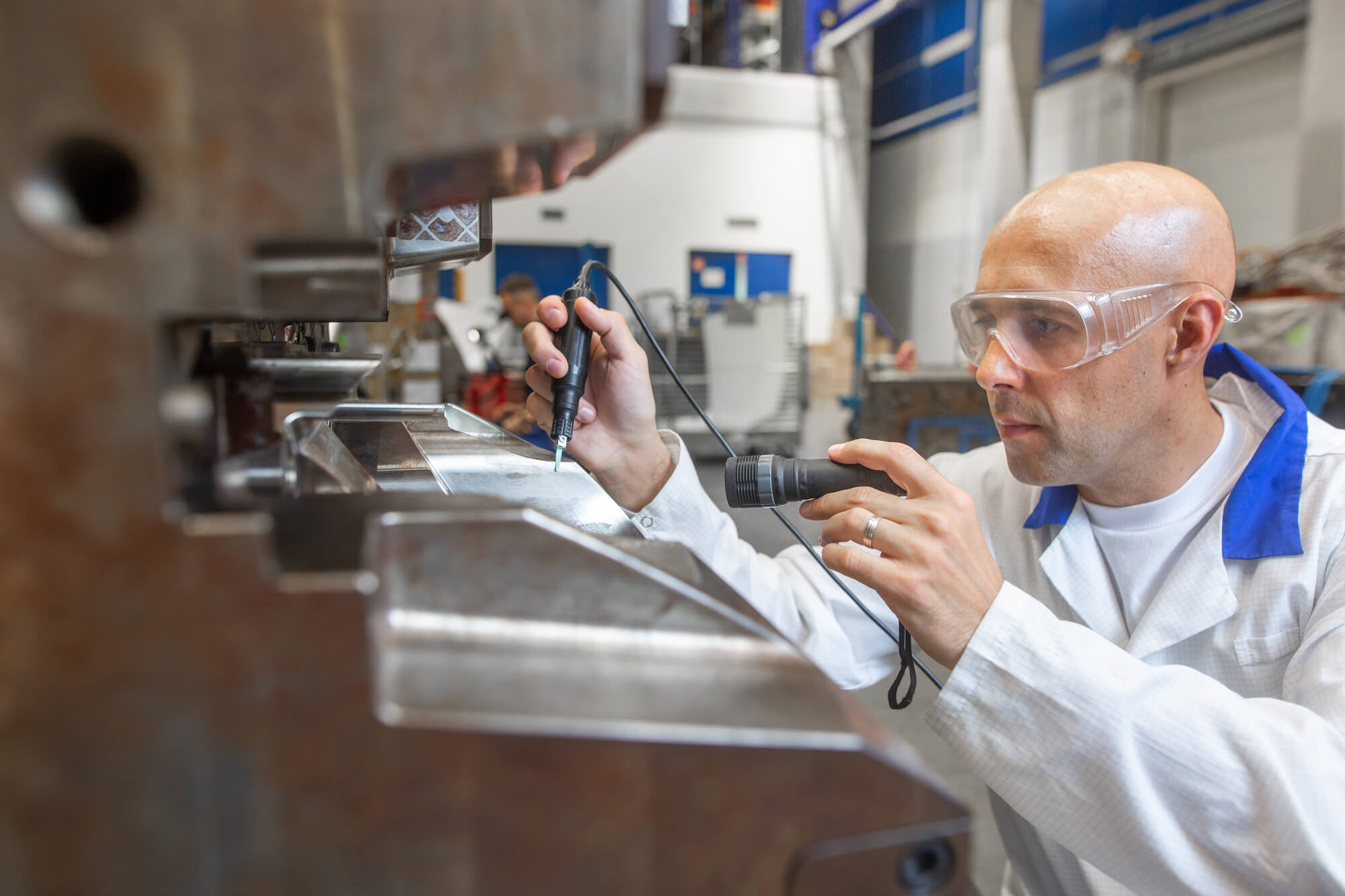
The benefits of injection molding are several, from cutting production times to cutting costs; the process is a cornerstone for many industries and their manufacturing process.
Setting up the mold and the injection material, however, can take some time and effort before mass production of a component can begin, and it begins with preparing the material.
Material Preparation
Material preparation is an essential initial step in the plastic injection molding process, involving the selection and treatment of plastic resins. Manufacturers must choose the appropriate plastic material based on the product’s required characteristics, such as durability, flexibility, and resistance to heat and chemicals.
Common materials used include polyethylene, polypropylene, ABS, and nylon. Each type of resin may need different handling procedures to optimize the product’s structural integrity and aesthetics.
Once the material is selected, it is commonly treated with various additives to enhance color, flame retardancy, or other properties. The resins are then typically dried in a hopper to remove moisture that could degrade the polymer during the molding process. This step is essential as moisture can cause bubbling, surface imperfections, or structural weaknesses in the final product.
The prepared plastic resins are then fed into the injection molding machine’s hopper. In this state, precise control over the material fed into the machine is critical to guarantee consistent quality and to prevent defects.
Thorough material preparation not only facilitates a smoother manufacturing process but also greatly impacts the overall quality and performance of the final molded products.
Clamping
Following material preparation, the clamping stage of the injection molding process is essential, where the mold must be securely closed before injecting the plastic. This phase is critical as it guarantees that the mold halves are perfectly aligned and tightly clamped together to prevent any material leakage during the injection phase.
The clamping force must be sufficiently high to counteract the pressure of the injected molten plastic, yet it must be carefully calibrated to avoid damaging the mold.
Clamping systems generally come in two types: hydraulic and toggle. Hydraulic clamps allow for the application of strong, direct force and are adjustable, which provides excellent control over the clamping pressure. This is particularly beneficial for manufacturing large or complex parts.
Toggle clamps, on the other hand, use mechanical advantage to apply clamping force and are typically faster and consume less energy, making them suitable for high-volume production of smaller parts.
Control over the clamping phase affects not only the quality of the finished product but also the efficiency of the production process. Properly executed, it guarantees minimal defects, reduces waste, and enhances the durability and precision of the mold, thereby optimizing the overall operational efficacy.
Injection Phase
Once the mold is securely clamped, the injection phase commences, where molten plastic is injected into the mold cavity. This vital stage is where the precision control of both the material feed and the injection parameters plays a pivotal role in shaping the quality of the final product.
The plastic, typically in granular form, is first fed into an injection molding machine, where it is heated to a molten state. The consistency of this molten plastic is carefully controlled to guarantee it flows evenly and completely fills the mold cavity.
The injection process is governed by specific parameters, including pressure, speed, and time. High pressure is essential for the molten plastic to overcome the resistance offered by the mold cavity and maintain the desired shape. The speed of injection needs to be managed to minimize turbulence yet guarantee rapid cavity filling.
Furthermore, the injection time is vital to prevent premature cooling that could lead to defects in the structure of the product. Control over these parameters guarantees that the injection phase is executed with precision, leading to high-quality outputs with minimal material wastage and operational efficiency.
This phase is essential for achieving the desired characteristics and specifications of the injection molded part.
Cooling and Solidification
During this stage, the molten plastic within the mold begins to cool down and solidify into its final shape. This process is critical, as it directly impacts the quality and the dimensional accuracy of the product.
The cooling rate must be carefully controlled to guarantee uniform solidification. Rapid cooling can lead to internal stresses and potential defects such as warpage or shrinkage. Conversely, cooling rates that are too slow can increase cycle times and production costs.
The design of the mold plays a pivotal role in how effectively it can manage heat transfer. Advanced molds may incorporate cooling systems that circulate water or oil to maintain a consistent temperature throughout the cycle.
Material properties also dictate the cooling phase’s specifics. Different plastics have varying thermal conductivities and cooling requirements. Engineers must select the appropriate cooling time and temperatures to match the material characteristics to avoid alterations in mechanical properties or appearances.
Mold Opening
This stage is essential as it involves the separation of the mold’s two halves, which must be executed with precision to guarantee the integrity of the newly formed plastic part.
The mold opening must be controlled carefully to prevent any sudden movements that could damage part of one-half of the mold. The opening of the mold is facilitated by a clamping unit, which is part of the injection molding machine.
The precise movement is critical; it guarantees that the molded part remains intact without any stresses that might lead to warping or surface defects. During this process, the settings of the opening speed and the distance of the opening are vital parameters that need careful adjustment based on the specifics of the part being molded.
These settings are typically optimized to balance cycle time with the quality of the final product, giving manufacturers control over the production process and guaranteeing consistent output quality.
Ejection and Finishing
Once the part is cooled and solidified, ejector pins within the mold push the part out. This action must be precisely timed and executed to prevent any deformations or damage to the part.
The ejection mechanism’s design and the placement of ejector pins are strategically planned to guarantee clean release without impacting the final product’s aesthetics and functionality.
Following ejection, the parts often undergo various finishing processes to enhance appearance, performance, and material characteristics. These may include painting, plating, or more specialized treatments like UV protection or anti-static coatings, depending on the application.
Each finishing technique must align with the end-use requirements and be rigorously controlled to maintain consistency and quality.
Quality assurance is integral during this final phase. Each part is inspected for defects such as warping, sink marks, or incomplete features. The goal is to deliver parts that meet precise specifications, guaranteeing reliability and functionality in their applications.
This meticulous approach to ejection and finishing underscores the precision and control essential in plastic injection molding.
Industries with Key Applications of Injection Molding
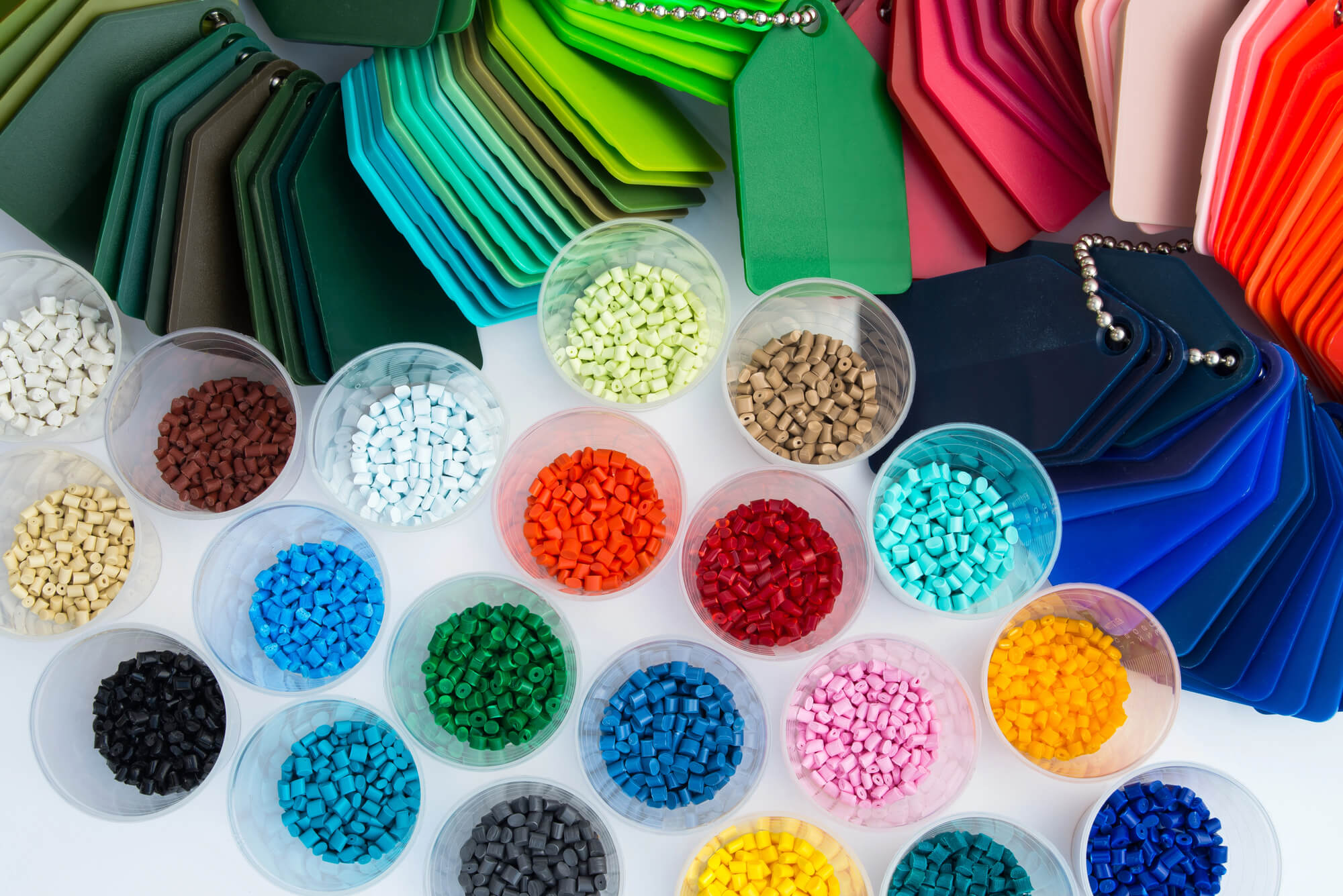
Plastic injection molding is integral to several key industries due to its versatility and efficiency in producing high-precision parts.
Industries like the auto and aerospace sectors rely heavily on this technology for components that must meet strict safety and performance standards, while others also use the technology for a broad range of applications, components, and even entire products.
Automotive Sector
While the automotive industry continually seeks innovative methods to enhance vehicle performance and aesthetics, plastic injection molding has emerged as a vital technology in manufacturing various automotive components. This process enables the production of high-quality, durable parts with complex geometries and excellent finishes, essential for modern automotive design and functionality.
Components such as:
- Dashboards
- Bumpers
- Cup holders
- Various under-hood parts are typically produced using this versatile technique.
Additionally, the ability to integrate different types of plastics and additives during the molding process makes it possible to create parts with specific properties such as enhanced strength, flexibility, or heat resistance.
Moreover, the cost-effectiveness of plastic injection molding, combined with its efficiency in mass production, aligns well with the automotive industry’s need to manage production costs while maintaining high standards of quality and performance.
This synergy between technology and industry needs underscores the indispensable role of plastic injection molding in contemporary automotive manufacturing.
Aerospace Industry
In the aerospace industry, plastic injection molding is a crucial player in crafting high-performance parts that are vital for the unique challenges of aviation and space travel. This incredible manufacturing process helps produce components that meet strict requirements for weight, durability, and resistance, which are essential for both aircraft and spacecraft.
The versatility of injection molding is what makes it so exciting, allowing for the creation of intricate shapes that can be tough to achieve with other methods. This is especially important in aerospace, where every part needs to be optimized for better efficiency and performance of the entire vehicle.
The materials used in aerospace injection molding are often high-tech thermoplastics and composites specially designed to endure extreme temperatures and chemical exposure. They’re chosen for their impressive strength-to-weight ratios and reliability in critical applications.
Common Components Made Using Plastic Injection Molding in Aerospace
- Air vents
- Brackets
- Housings for electrical systems
These components are produced to meet rigorous safety and functionality standards.
Additionally, the precision and repeatability of plastic injection molding cater to the aerospace industry’s demand for consistent mass production while ensuring top-notch quality for each piece.
Overall, this innovative process not only boosts the safety and reliability of aerospace components but also fosters creative designs that tackle the unique obstacles of flying and space exploration.
Defense Industry
Similar to its role in aerospace, plastic injection molding is equally significant in the defense industry, where it is employed to produce robust and precise components essential for military applications. The versatility and reliability of this technology make it ideal for the production of high-performance parts that must meet stringent quality and durability standards.
This includes items such as:
- Protective gear
- Components for weaponry
- Communication devices
- Parts for military vehicles
The ability to use a wide range of materials, from standard plastics to advanced composites, allows designers to tailor properties like strength, density, and resistance to environmental factors, which are vital in combat and field conditions.
Moreover, the precision of injection molding guarantees that even the most complex parts can be produced with tight tolerances, which is critical for the functionality and safety of military equipment. The process also supports design flexibility and rapid prototyping, facilitating swift advancements in military technology and adaptability to new situations.
Cost-effectiveness, coupled with high-volume production capabilities, enables the defense sector to maintain readiness and strategic advantage. Consequently, injection molding is not just a manufacturing technique but a strategic asset in the defense industry.
Medical Industry
Plastic injection molding has become indispensable in the medical industry, facilitating the production of vital healthcare products with high precision and reliability. This process allows for the mass production of consistent, high-quality components essential in medical devices, surgical tools, and diagnostic equipment.
The ability to use a wide range of materials, including high-performance plastics that meet rigorous regulatory standards for biocompatibility, strength, and sterilization, underscores its significant role.
Components such as are made with IM for this industry:
- Syringes and surgical instruments
- Drug delivery devices (e.g., inhalers, insulin pens)
- Diagnostic equipment components (e.g., casings, testing parts)
- Prosthetic parts and laboratory tools
- Housing for medical devices
The precision of injection molding supports the industry’s need for components with complex geometries and tight tolerances that are often required in medical applications. In addition, the process enhances product reliability, an important factor in medical device manufacturing, ensuring that products perform safely under critical conditions.
The integration of automation in injection molding processes also helps maintain stringent hygiene and quality control standards necessary in the medical field. This results in reduced human error and consistent product quality, which are paramount in the production of medical devices and supplies.
Consequently, injection molding is not only about shaping plastic but is pivotal in advancing medical technology and patient care.
Electronic Components
The consumer electronics industry heavily relies on plastic injection molding to create durable, precise, and aesthetically appealing components found in all types of electronic devices, such as smartphones, computers, and televisions.
Among the many uses of IM in this industry are:
- Outer or protective casings for smartphones, tablets, laptops
- Connectors, buttons, and switches
- Cable insulation and wire management components
- Internal structural components for devices
- Remote controls and other small electronic gadgets
The ability to use various plastic materials also allows for flexibility in properties like conductivity, resistance, and durability, tailoring components to specific functional requirements.
The advantages of plastic injection molding in electronics extend beyond component fabrication to encompass cost-effectiveness and scalability. Once the initial tooling is developed, the cost per unit during manufacturing is markedly reduced, making it ideal for large-scale production typical in the electronics industry.
This efficiency not only drives down production costs but also accelerates the speed of manufacturing, enabling quicker market entry, a crucial ability in the fast-paced consumer electronics sector.
Moreover, the precision of this method minimizes material waste, aligning with the sustainability goals of many companies in this sector. As electronics continue to evolve, the role of plastic injection molding in meeting the demands for newer, better-performing devices while managing economic and environmental impacts remains indispensable.
Food and Beverage Sector
In the food and beverage sector, plastic injection molding plays a pivotal role in the production of packaging and container solutions. This manufacturing process is vital for creating high-volume, consistent, and reliable products essential for food safety and distribution.
Injection molding enables the production of such goods as:
- Reusable and disposable food containers (cups, lids, storage boxes)
- Tamper-evident packaging components
- Bottle caps and closures
- Food-safe utensils and serving ware
- Packaging materials that comply with health standards
All are significant in maintaining the integrity and freshness of edible products.
Materials used in this process, such as food-grade plastics, guarantee compliance with health and safety regulations, offering resilience against contamination and spoilage.
Moreover, the versatility of plastic injection molding allows for the design and production of complex shapes with precise dimensions, which are often required in food packaging. This includes everything from beverage bottles and yogurt containers to condiment tubs and ice cream lids.
The automation in injection molding processes also enables manufacturers to control costs and scale production efficiently, meeting the demands of the fast-paced food and beverage industry.
The ability to incorporate recycled plastics into the production cycle further enhances the appeal of injection molding in this sector, aligning with increasing consumer demand for sustainability. This method not only optimizes resource use but also reduces waste, supporting the industry’s shift towards more environmentally responsible practices.
Furniture Industry
The furniture industry considerably benefits from plastic injection molding, which facilitates the manufacturing of durable, detailed components at high volumes. This process allows for the precise creation of complex shapes and designs, which are essential in modern furniture manufacturing.
Materials used in this process, such as high-strength polymers and composites, guarantee that the produced items are robust, lightweight, and can withstand regular use while maintaining aesthetic appeal.
Injection molding in furniture production not only enhances the efficiency of manufacturing processes but also offers significant cost advantages. The ability to produce large quantities of components with consistent quality reduces overall production costs. This is particularly beneficial in an industry where demand can fluctuate based on seasonal trends and consumer preferences.
Moreover, the versatility of plastic materials used in injection molding means that designers have greater creative freedom to innovate. This results in furniture that can be tailored to meet specific functional requirements and consumer desires, such as ergonomic features, integrated functionality, and modern aesthetics.
Among the many pieces and components that come from IM for the furniture industry are:
- Ergonomic chair backs and armrests
- Plastic joints and fittings for modular furniture
- Table legs and chair components
- Durable casters and gliders for furniture movement
- Decorative and functional accents for office or home furniture
As sustainability becomes increasingly important, the furniture industry is also exploring the use of recycled plastics in injection molding, thereby reducing waste and environmental impact.
Agricultural Industry
Agriculture’s reliance on plastic injection molding has revolutionized the production of durable, high-quality components vital for modern farming equipment and infrastructure.
This technological advancement enables the creation of a diverse range of products tailored to withstand the harsh conditions and rigorous demands of agricultural environments.
Plastic injection molding is instrumental in manufacturing items such as irrigation components, which are critical in managing water resources efficiently. Furthermore, the method is used to produce robust and lightweight panels, handles, and housing for various types of machinery, markedly enhancing their longevity and performance.
The adaptability of injection molding processes allows for the integration of multiple materials and additives, improving the UV resistance and thermal stability of agricultural products. This is essential for items exposed to prolonged sunlight and fluctuating temperatures.
Additionally, the cost-effectiveness of mass-producing these components guarantees that innovative agricultural practices are economically viable. As a result, farmers can leverage advanced tools and equipment, optimizing productivity and guaranteeing sustainability.
Plastic injection molding, consequently, not only supports essential farming operations but also drives agricultural innovation, making it a cornerstone of modern agricultural practices.
Construction Industry
Plastic injection molding greatly shapes the construction industry by providing essential components that enhance building reliability and efficiency. This process is fundamental in manufacturing a myriad of high-strength, lightweight construction materials ranging from piping systems to insulative elements.
The versatility of materials used in injection molding, such as polyethylene and polyvinyl chloride, contributes considerably to the durability and longevity of construction products.
These materials resist environmental stress and degradation, which is critical for building materials exposed to diverse weather conditions.
Additionally, the efficiency of the injection molding process supports the construction industry’s demand for high-volume, cost-effective production cycles. This capability streamlines manufacturing processes while reducing overall project costs, thereby providing a competitive edge in the construction market.
In addition, advancements in injection molding technologies have enabled the integration of sustainable practices within the construction industry. Recycled plastics are increasingly utilized, promoting environmental responsibility while maintaining the material properties required for important construction applications.
Consequently, injection molding remains instrumental in driving innovation and sustainability in the construction sector.
Future Trends in Injection Molding
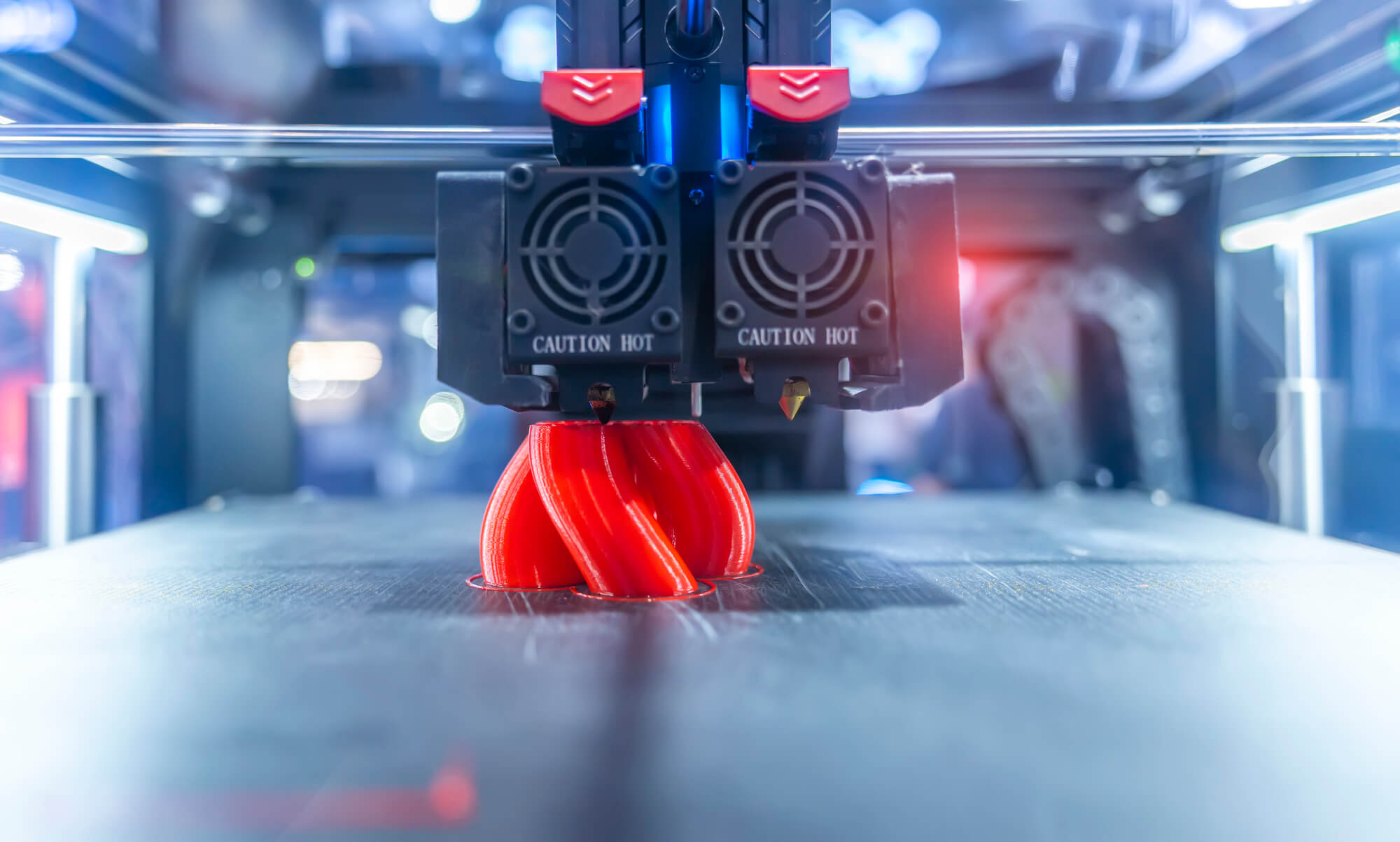
As the landscape of manufacturing evolves, injection molding is poised to integrate more deeply with other advancements, like 3D printing and artificial intelligence, enhancing efficiency and precision.
Relationship with 3D Printing
The convergence of 3D printing technology with traditional plastic injection molding is heralding a new era in manufacturing efficiency and innovation. This relationship offers manufacturers unprecedented control over production processes, allowing for the rapid prototyping of parts before committing to large-scale injection molding operations.
3D printing enables the creation of complex geometries that are either too costly or impossible to achieve through conventional molding techniques. By integrating these two methodologies, businesses can streamline their design-to-production cycles, reduce waste, and enhance customization capabilities.
3D printing also serves as a complementary tool during the tooling phase of injection molding. It can be used to produce molds for short-run production or components with intricate details, greatly reducing the time and cost associated with traditional mold making.
As a result, manufacturers can respond more swiftly to market changes and consumer demands, thereby maintaining a competitive edge.
Moreover, this synergy facilitates the testing of mold designs, material compositions, and functionality of parts, leading to improved product quality and performance.
As industry leaders continue to explore and enhance the interoperability of 3D printing and injection molding, the boundaries of what can be achieved in plastic manufacturing are expected to expand further, offering more control and flexibility in production strategies.
Biodegradable Materials
In response to growing environmental concerns and consumer expectations, the incorporation of biodegradable polymers such as polylactic acid (PLA), polyhydroxyalkanoates (PHA), and starch-based plastics into injection molding processes is becoming increasingly vital. These eco-friendly alternatives decompose under specific conditions, offering a significantly lower ecological footprint compared to conventional plastics.
The shift towards biodegradable materials not only aligns with global regulatory trends aimed at reducing plastic waste but also positions manufacturers to cater to a market that will expand rapidly. In fact, the biodegradable plastics market is projected to reach an impressive $27.3 billion by 2027, driven by a compound annual growth rate (CAGR) of 18.9% from 2022 levels—a trend largely fueled by rising consumer demand for sustainable products.
By leveraging biodegradable materials, companies can meet regulatory expectations while simultaneously gaining a competitive edge in an increasingly eco-conscious marketplace. Furthermore, these materials often come with unique properties, allowing for innovation in product design and functionality tailored to various applications.
However, the adoption of biodegradable materials presents its own challenges.
Manufacturers must meticulously evaluate mechanical properties and degradation rates to ensure the quality and performance of their products. This necessitates optimizing processing parameters and carefully selecting the right materials for specific production needs. As a result, achieving success in sustainable injection molding relies heavily on maintaining a high level of control throughout the process.
Challenges for the Technology
Despite the rapid advancements in plastic injection molding, the technology faces significant challenges that could impede its future growth.
Environmental Impact
- One of the primary obstacles is the increasing environmental scrutiny. Plastic injection molding typically uses petroleum-based plastics, which can have negative environmental impacts, both in terms of raw material extraction and plastic waste. Additionally, scrap material generated during the molding process (such as runners or flash) may not always be recyclable. Biodegradable materials can be a crucial innovation that alleviates environmental concerns.
Material Limitations
- Not all plastics are suitable for injection molding. Some specialty or high-performance materials may not work well in the process or may require specialized molds. In addition, certain plastic types may be prone to warping, shrinking, or cracking during cooling, which can affect part quality.
Coexisting with automation
- In addition, the shift toward automation and smart manufacturing technologies demands substantial investment in both equipment and skilled personnel. Companies must navigate these financial and operational hurdles to stay competitive.
Post-Processing and Finishing
- Some parts may require additional post-processing steps such as trimming, deburring, or painting to achieve the desired finish. This adds time and cost to the production process, especially for high-precision or aesthetic parts.
Businesses must proactively adapt to these changes, balancing compliance with innovation. Addressing these challenges effectively will be essential for leveraging the full potential of plastic injection molding in the evolving industrial ecosystem.
Injection Molding is a Technology that Will Continue to Revolutionize Manufacturing
To sum up, plastic injection molding stands as a pivotal manufacturing process, instrumental in producing high-volume, intricate components with precision and efficiency. Its versatility across multiple plastic injection molding applications and materials positions it as an indispensable method in various industries, from automotive to medical.
As technology advances, the future of injection molding promises further enhancements in sustainability and customization, ensuring its continued relevance and evolution in the face of growing industrial demands.



